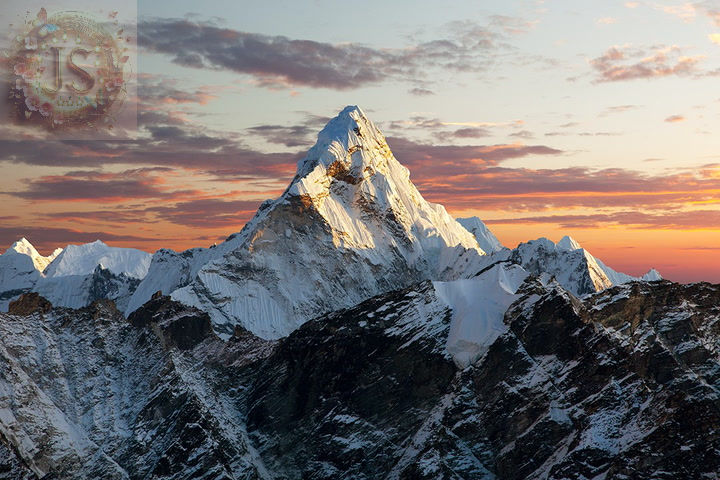Tectonic Hazards - All You Need To Know About Tectonic Hazards Including Earthquakes, Volcanic Eruptions And Tsunamis And Their Affects.
- Salma H
- Nov 5, 2024
- 4 min read
Updated: Nov 24, 2024
Earth is a geographically active planet meaning the Earth’s surface is always changing and moving due to the shifting of plate tectonics driven by convection current. There are four main plate boundaries. They are Destructive, Constructive, Conservative and Collision plate boundary.

Conservative plate boundary
This is when two plates slide past each other. These plates often get stuck in place for a very long time like thousands of years. When the plate suddenly gets released, it releases tremendous amount of energy. It creates shockwaves which shakes the ground above. This is known as an Earthquake. In this plate boundary there are no volcanos, just earthquakes. The famous real life example of this boundary is the San Andreas Fault-line.
Constructive plate boundary
This is when two plates normally oceanic plates move away from each other in opposite directions driven by strong convection currents. When the two plates move, magma is forced to gush put out of the mantle to the crust. This type of plate boundary creates new crust which is way it is called Constructive plate boundary. The most famous example of this plate boundary is the Mid=Atlantic Ridge.

Collision Plate Boundary
This is when two plates, normally continental, collide head on. The two plates have the same density so instead of subducting they both wrinkle and crumple up, causing folds and depression to form which crates mountain ranges to form like the Himalayas.

Destructive plate Boundary
This is when the heavier and more dense oceanic plate subducts under the lighter and less dense continental plate. As the oceanic plate melts the material rises and burst out on to the surface by violent volcanic eruptions and earthquakes. In this plate boundary crust is being destroyed.

The difference between a Mountain and a Volcano

Mountains are normally classed as mountains if they are over three hundred meters tall or one thousand feet in height. They normally have steep and sloping sides with sharp or blunt edges. The mountain’s tip is called a Peak or a Summit. We often find that mountains range the Himalayas, and the Alps are made out of metamorphic rocks. Metamorphic rocks are a type of rock that has gone through extremely high pressure and heat causing the rock to become hard and crystalline. Unlike volcanos mountains do not erupt because they form between collision plate boundary where no crust is being formed or destroyed.

Volcanos are considered to be a volcano is they are an opening or a vent from the mantle to the Earths crust where trapped gas and magma and release when in immense pressure. The biggest volcano is actually not on Earth but on Mars, Mount Olympus Mons.
There are two types of volcanos. One is Composite volcano and the other is Shield volcano. Composite volcanos are very large volcanos with steep sides and normally a narrow base but a tall structure. It has a very acidic lava which makes it very viscous. They erupt periodically and can remain active for 10,000 years and more. They release enormous amounts of gases and cause pyroclastic flows which can reach 800’C and travel tens of metres per second.
Shield volcanos are very wide volcanos with shallow sides with a very wide base. They are wider than they are tall. It has very runny lava so it can flow very easily. They have occasional gentle eruptions. Shield volcanoes have a shorter life span than Composite volcanos.
Active, Dormant and Extinct Volcanoes
Active Volcano

Active Volcanoes are volcanoes that has the potential to erupt or has been erupting since the Holocene. Mount Unzen, in Japan, is thought to be the oldest active volcano with an astonishing age of 2.5 million years old and its last documented eruption was in 1984. As you can see in the image above, volcano can produce lightning as the ash and debris brush past each other, which cause static electricity to build up. When the energy is finally released it produces volcanic lightning.

Dormant volcano
Dormant volcanos like Mount Fuji in Japan and Mount Kilimanjaro are volcanoes that has not erupted for hundreds or thousands of years but are capable and are expected to erupt again in the future. The eruption is normally very vigorous as it can be very such due to the build of immense pressure.
Mount Kea in Hawaii is a dormant volcano too and it considered to be even taller than Mount Everest in the Himalayas as its base starts from the sea floor.
Extinct Volcano

Extinct volcanoes are volcanoes that are thought to be no longer capable of erupting again or have not erupted during Human history. Volcanoes becomes extinct if they have drained their magma chamber or if a volcano becomes cut off from its magma chamber. A volcano becomes dormant first then gets extinct/inactive. Extinct volcano can form very fertile islands because the ash and lava are nutrient rich meaning plants and animals can thrive on these islands.
Earthquakes and Tsunamis

Earthquakes are intense bursts of energy and the release of pressure that was suddenly releases when a plate gets unstuck. On March 11th earthquake with a magnitude of nine struck Japan which shook the Earth and shifted the axis of Earth. The power on an Earthquake is immense. Aftershocks are series of Earthquakes that comes after the initial Earthquake. This is a process to readjust the rupture along the Faultline.

If the Earthquake happens under the sea or a body of water, it can cause a tsunami. When the plate gets unstuck, the crust slightly flicks up. This process displaces water. Like a ripple the tsunami spreads outwards like a ring. At this stage, the tsunami travels extremely fast but as it nears the shoreline or a coast the tsunami experiences more friction against the sea floor. This will slow down the tsunami but will increase the height as the immense force push the water ahead of itself which causes the wave, tsunami, to get taller. The tallest tsunami ever recorded was 1720 feet high.
The end, this was the effects of tectonic hazards such as tsunami and earthquakes and how they shape the world. Thank you.
Sponsor
"This Content Sponsored by Genreviews.Online
Genreviews.online is One of the Review Portal Site
Website Link: https://genreviews.online/
Sponsor Content: #genreviews.online, #genreviews, #productreviews, #bestreviews, #reviewportal"


Comments